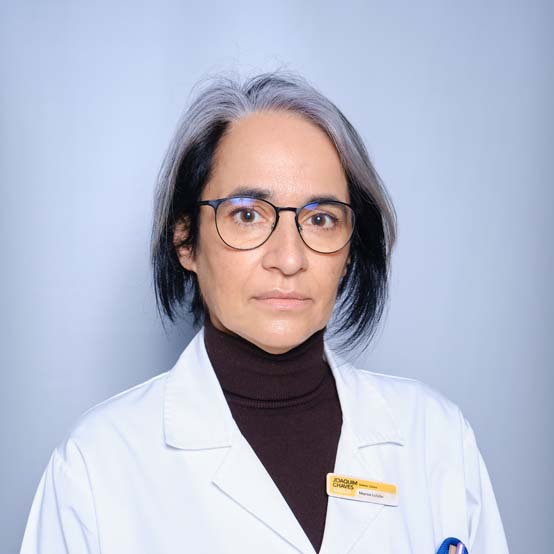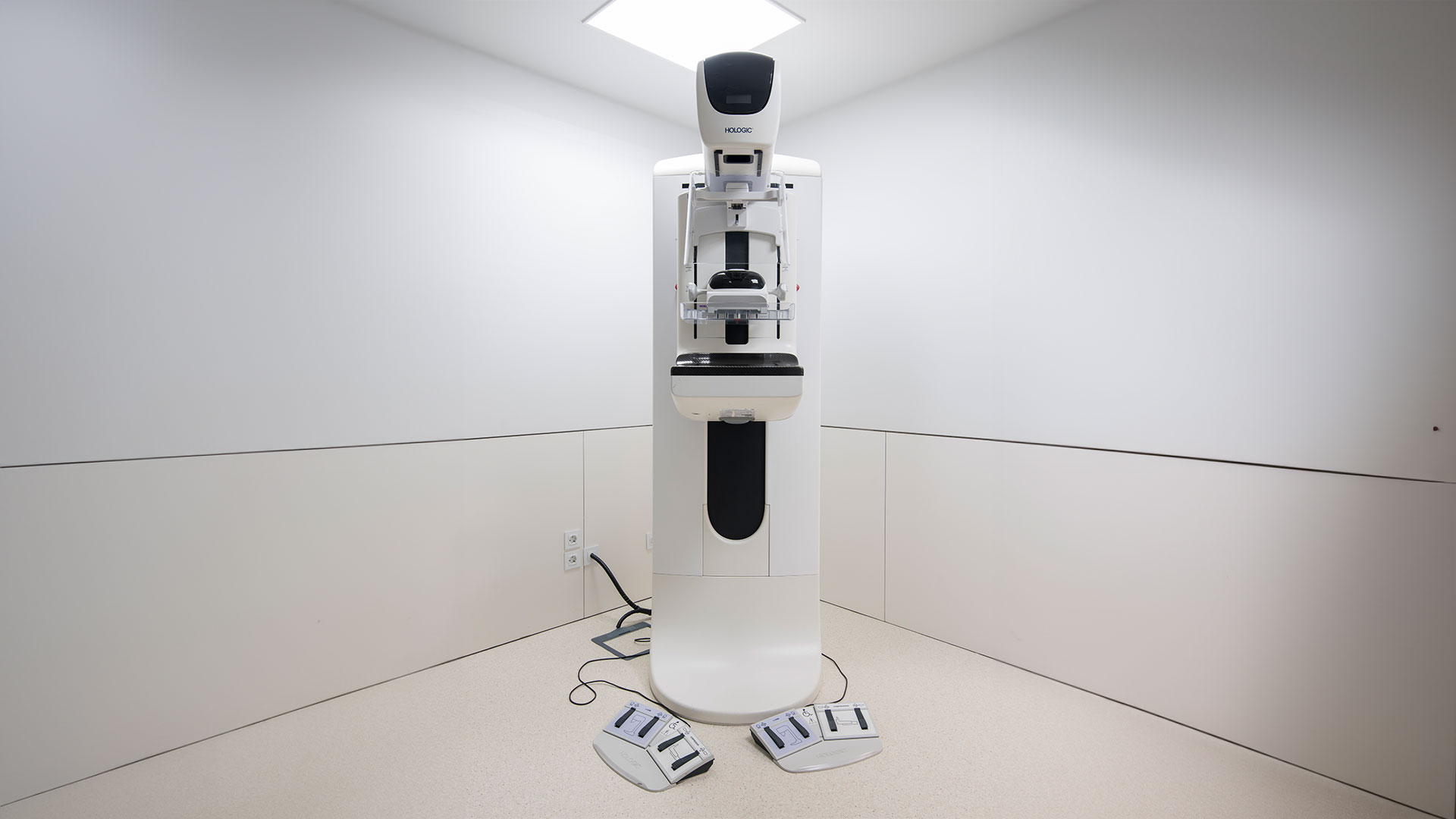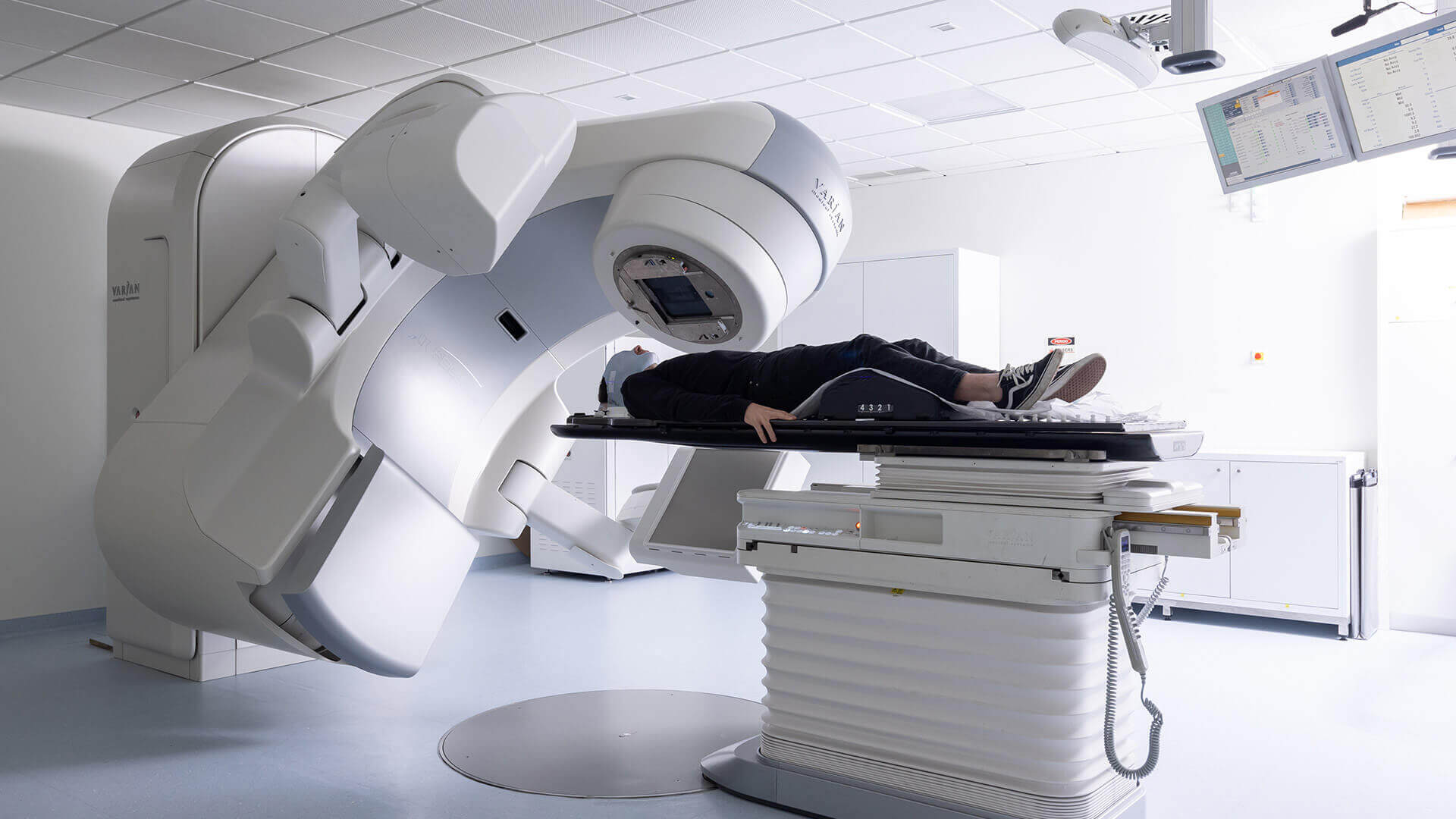Breast cancer is one of the most concerning diseases for women. Find out the symptoms to watch out for and the available treatments.
Breast cancer is one of the most common cancers among women, ranking as the second leading cause of cancer-related deaths in Portugal. Annually, around 7,000 new cases are detected in our country, and 1,800 women fall victim to this disease, which also affects men but in a lower proportion (approximately 1%). Discover the main symptoms and how it can be treated.
What is breast cancer?
Breast cancer occurs when breast cells undergo changes and proliferate uncontrollably, forming a mass called a tumor. This multiplication of new and unnecessary cells invades the boundaries of organs and spreads to other parts of the body, initially affecting the closest organs and over time reaching the most distant ones, resulting in what is called metastasis.
What are the symptoms of breast cancer?
There are several signs that may indicate the presence of breast cancer and, therefore, require special attention. These are the main warning signs:
- Any change in the appearance, shape, or palpation of the breast.
- Nodules or thickening in the breast or armpits.
- Increased sensitivity in the nipple.
- Recent nipple retraction.
- Altered skin of the breast, areola, or nipple (e.g., scaly, red, or swollen appearance).
- Recent nipple discharge.
- Persistent breast pain or discomfort.
If you detect at least one of these signs, you should promptly consult your doctor.
Who is at risk of developing breast cancer?
Although a specific cause for breast cancer is not known, clinical research has identified several factors that can contribute to this condition, some of which can be avoided. Women over the age of 60, especially those with a personal or family history of breast cancer, are at a higher risk of incidence. The risk is also increased for those who have never had children or had their first child after the age of 31. Early onset of menstruation (before the age of 12) or late menopause can also contribute to the risk. Sedentary lifestyle, obesity (particularly after menopause), and alcohol consumption are other factors that contribute to the development of the disease.
How is breast cancer diagnosed?
The doctor will gather information about your medical and family history, perform an examination, and request several tests to establish a diagnosis. These are the most common tests:
Clinical Breast Examination:
The doctor performs a physical examination in different positions, looking for the possible presence of nodules or other issues. Typically, soft, round, and easily movable nodules are benign, while hard, irregular, and fixed nodules can be more serious. However, further diagnostic tests are necessary.
Diagnostic Mammography:
Diagnostic mammography is used to investigate suspicious symptoms and confirm the diagnosis. This examination is based on X-ray images, providing a clearer and more detailed visualization of the areas of interest.
Ultrasound (Ultrasonography):
Ultrasound uses high-frequency sound waves to assess whether a nodule is cancerous. It enhances the ability to detect suspicious lesions, indicating a higher or lower probability of malignancy. Ultrasound is an important imaging complement to mammography.
Magnetic Resonance Imaging (MRI):
MRI uses magnetic fields to obtain detailed images of breast tissues. It can be especially useful in certain situations when the results of other imaging techniques are inconclusive. It can also be used to evaluate the tumor's response to treatment.
Biopsy:
A biopsy involves the extraction of a part of the breast tissue or fluid whenever there is suspicion of cancer before any treatment is initiated. Generally, this extraction is performed using a needle guided by ultrasound.
Why is breast cancer screening important?
Regular screening tests are crucial, even if you do not have any signs or symptoms. By doing so, you are helping doctors detect and treat cancer. If detected early, the success rate of treatment is around 95%.
Therefore, do not wait for symptoms to arise and talk to your family doctor. Ask which specific tests you should undergo and the recommended frequency.
As a general guideline, it is recommended that women over the age of 40 have a mammogram annually or every two years. This examination can detect very small tumors that are often not palpable. Screening allows for early detection, increases the effectiveness of treatments, improves life expectancy, and often leads to a complete cure.
What types of treatments are available for breast cancer?
There are several treatment options for breast cancer, which can be applied in combination depending on the specificity of each clinical case.
Surgery:
Surgery is the most common treatment for breast cancer. There are two types of surgery that may be recommended based on the stage of the disease.
Breast-Conserving Surgery
In this type of surgery, the tumor and surrounding tissue are removed while preserving as much of the breast as possible. It may also be necessary to remove axillary lymph nodes to check if cancer cells have spread to the lymphatic system. After breast-conserving surgery, radiation therapy to the operated breast may be required to ensure the destruction of any remaining cells.
Mastectomy
In a mastectomy, the entire breast is removed, and after the surgery, radiation therapy may also be recommended. Patients may choose to undergo immediate or delayed breast reconstruction. Removal of the breast may cause some short-term pain and increased sensitivity in the area. Some numbness, itching, or dryness may also be experienced. These sensations typically diminish over time, and your doctor may recommend procedures to address these issues.
Chemotherapy:
Chemotherapy for breast cancer usually involves a combination of different drugs to combat and eliminate cancer cells. The treatment can be administered orally in the form of tablets or intravenously. In both cases, the treatment works systemically, as the drugs circulate throughout the body, not just targeting the tumor.
This treatment can cause side effects such as hair loss, increased susceptibility to bruising, loss of appetite, nausea, and vomiting. The effects are reversible and can be managed with specific medications.
Radiation Therapy:
Radiation therapy can be external or internal, and a patient may undergo one or both types. External radiation therapy involves using radiation from a machine to target and eliminate cancer cells. On the other hand, internal radiation therapy is performed using thin plastic tubes that are implanted directly into the breast and remain there for several days.
This treatment may cause fatigue and some changes in the skin of the breast, such as redness, dryness, or sensitivity. These problems are reversible, and it is advisable to expose the area to air as much as possible, avoiding the use of tight-fitting clothing like bras or other tight garments that put pressure on the skin.
A hormonotherapy
Hormone therapy aims to prevent cancer cells from feeding on the body's natural hormones. If previous tests indicate the presence of hormone receptor-positive cancer cells, hormone therapy may be recommended. Medications that block hormone receptors are administered, and the doctor may also suggest the removal of the ovaries to halt hormone production.
Hormone therapy may not have side effects, but depending on the type of medication used, women may experience some symptoms of menopause, such as irregular menstrual periods, hot flashes, or vaginal dryness. If the ovaries are removed, these symptoms may be intensified. However, there are methods available to alleviate these effects, which should be prescribed by the doctor.
Surveillance and follow-up
Surveillance and follow-up for women who have had breast cancer are crucial. The doctor will advise on the type and frequency of exams. Breast cancer may recur after treatment, either in the same location or in other parts of the body, and it is the doctor's role to prescribe the best treatment plan for each case.
What determines the treatment options for breast cancer?
The treatment options for breast cancer primarily depend on the stage of the disease. Staging classifies breast cancer based on the extent of the tumor, that is, its progression and severity.
Stage 0:
Breast cancer in stage 0 is in a very early stage, non-invasive, and confined to one location. Typically, treatment involves breast-conserving surgery followed by radiation therapy, with regular exams recommended to detect any additional signs of breast cancer.
Stage I:
In this stage, breast cancer is small, usually less than 2 cm, and may be microscopically present in the axilla (armpit). Treatment may include surgery and radiation therapy, with the removal of affected axillary lymph nodes.
Stage II:
Breast cancer in stage II has a size greater than 2 cm, but its presence in the axilla is still microscopic. Treatment options are similar to the previous stage, depending on the tumor size and cell type.
Stage III:
In this stage, breast cancer has a size larger than 5 cm, and axillary involvement is detected by palpation. Chemotherapy is generally recommended to reduce the tumor size, allowing for breast-conserving surgery. Adjuvant therapy may also be recommended to eliminate any remaining cancer cells.
Stage IV:
Breast cancer is in an advanced stage, with metastasis to other organs and systems. The recommended treatment may involve a combination of the procedures mentioned earlier, with a low likelihood of a cure. The goal is to control symptoms, delay disease progression, and improve quality of life.
Joaquim Chaves Saúde, fighting breast cancer with you:
Don't wait for signs and symptoms; keep up with breast cancer screening exams. Additionally, if you notice any changes in your breast or have an abnormal test result, seek medical help.
Joaquim Chaves Saúde offers a Breast Oncological Surgery Consultation, where you can receive personalized care from specialized teams. From prevention to diagnosis and treatment, trust your health to competent and experienced hands. Schedule your consultation now.






